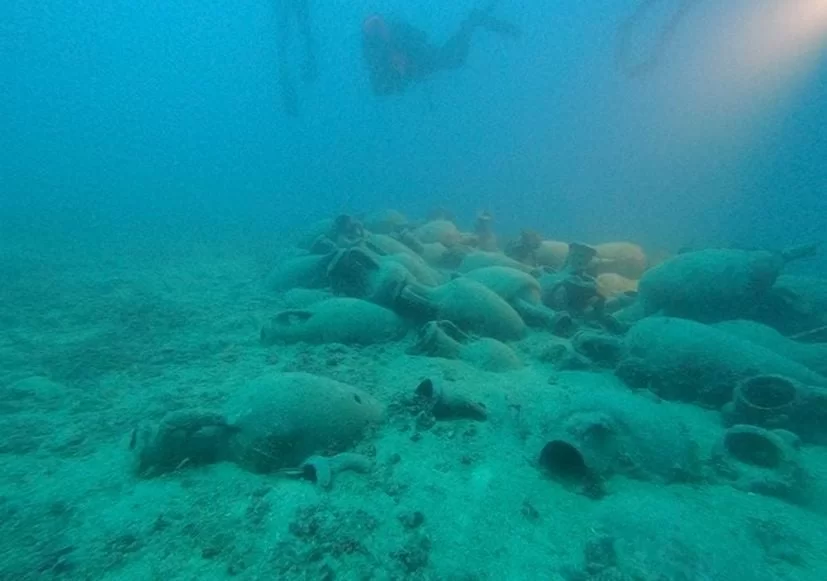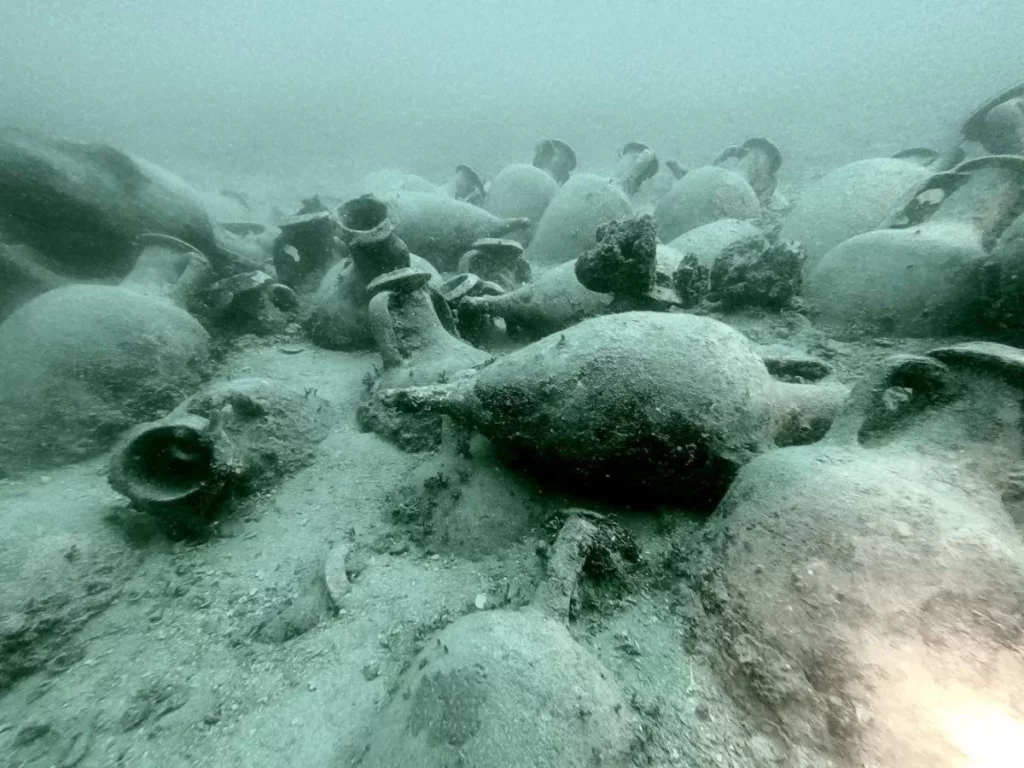Mine-clearance divers discovered an ancient shipwreck dating from the 3rd century BC

As a result of collaborative training exercises between Croatian and Italian naval mine-clearance divers, one of the earliest fully preserved shipwrecks in the eastern Adriatic seabed has been discovered.
A previously undiscovered shipwreck containing a cargo of ancient amphorae from the 3rd century BC has been found in the waters of the Šćedra Island archipelago, just off the southern coast of Hvar island, the Croatian Ministry of Culture and Media announced in a statement on Friday.
The discovery was made as part of a long-standing collaboration in which Croatian divers have been operating from Italian minehunter vessels in a NATO mine counter-measures group in recent years.
The first of two weeks’ joint training had covered mine-clearance procedures using ROVs and AUVs near Čiovo Island, before the naval divers turned their attention to the Šćedra Island archipelago off Hvar during the week of 15-21 June.

Using mine clearance procedures and various types of equipment such as underwater autonomous vehicles and remotely operated underwater vehicles, the first week focused on joint conditioning training in the waters near Čiovo Island, while the second week involved diving activities in the waters around Hvar Island.
The success of the cross-border cooperation was viewed as an opportunity to involve bodies other than Croatia’s Ministry of Defence, so the conservation department of the Ministry of Culture and Media provided the military with information about existing and potential archaeological sites.
Despite the adverse weather conditions, a multi-layered seabed scanning operation was completed.
Several potential marks were identified, and these were followed up using a sonar- and camera-equipped ROV before scuba diving was carried out by both Croatian and Italian mine-clearance personnel.
One of these investigations resulted in finding the previously unsuspected wreck.

Underwater archaeologists from the Ministry of Culture and Media, Saša Denegri, and from the University of Split, Tea Katunarić Kirjakov, conducted dives at the specific location and confirmed that the shipwreck is fully preserved and dates back to the 3rd century BC, containing a cargo of ancient amphorae. It rests at a depth of 50 meters.
This is one of the earliest fully preserved shipwrecks on the eastern Adriatic Sea coast, taking into account the dating and preservation of the site.
Plans for the site’s protection, conservation, and presentation will be developed based on the precise context, extent, and characteristics of the site, which will be determined by future archaeological research.
